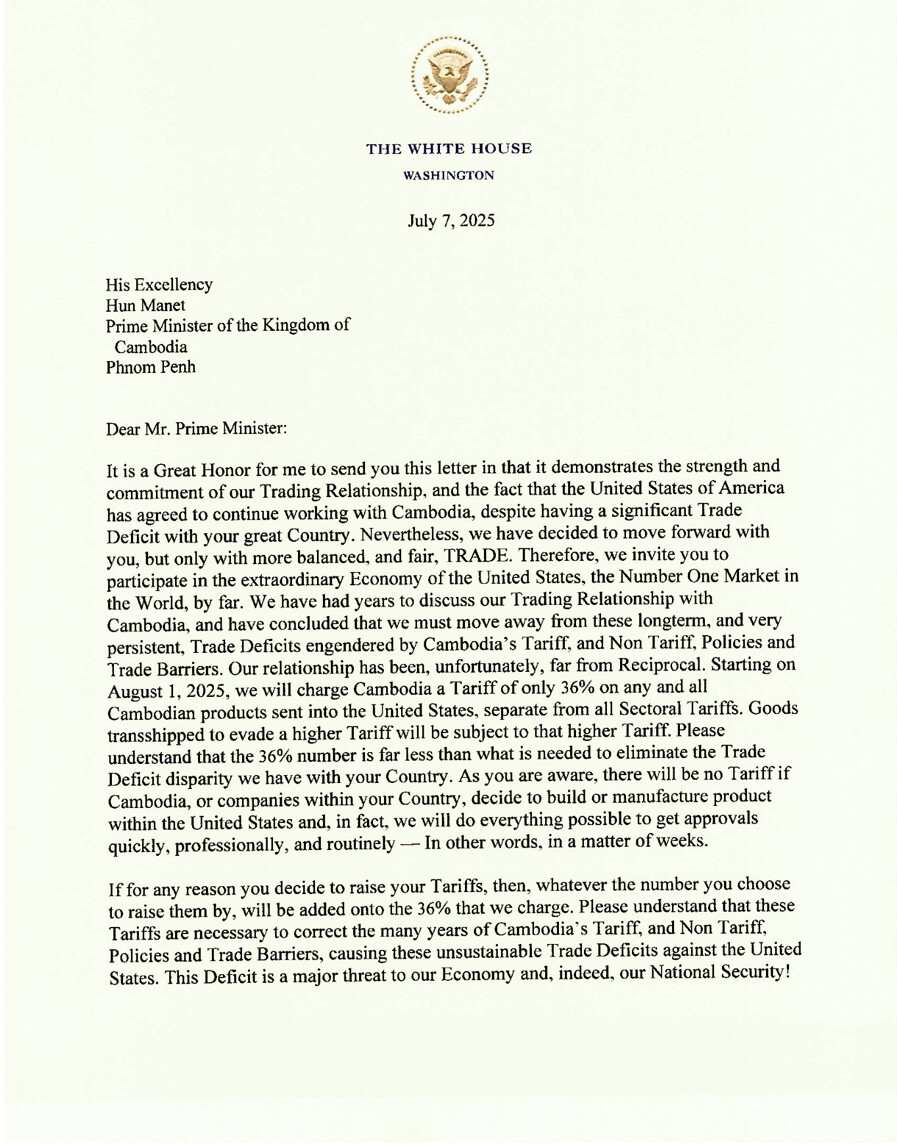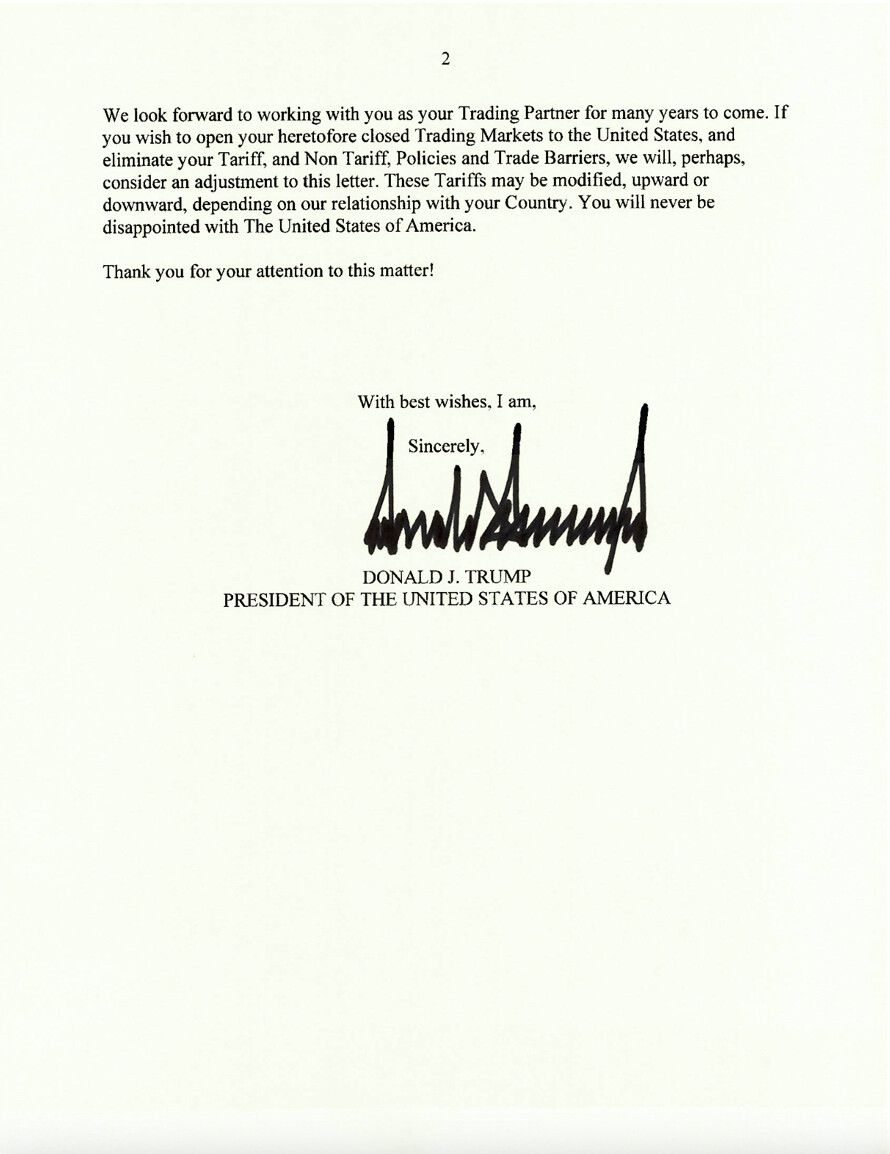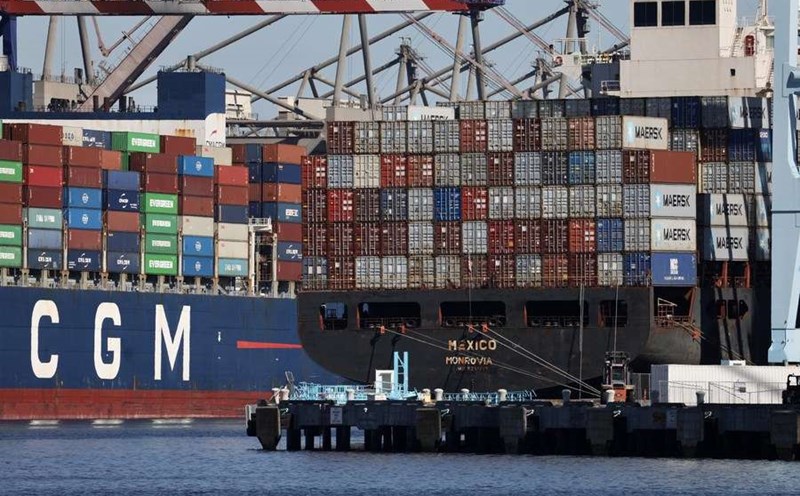US President Donald Trump posted nearly identical letters on the social network Truth Social to Japanese Prime Minister Shigeru Ishiba and South Korean President Lee Jae Myung, declaring the "tax of only 25%" for all imports starting from August 1. He said that economic relations with Tokyo and Seoul unfortunately have not been counterproductive so far.
We decided to continue working with you, but only with more balanced and fair trade, Trump wrote. We invite you to join the extraordinary economy of the United States, the worlds number one market, far surpassing the rest.
He warned that he could impose another 25% if Japan or South Korea respond by raising their tariffs.
Mr. Trump also imposed a 25% tariff on goods from Kazakhstan, Malaysia and Cambodia. Higher tariffs will be imposed on imports from South Africa and Bosnia & Herzegovina (30%), Indonesia (32%), Serbia and Bangladesh (35%), Thailand and Cambodia (36%), along with Laos and Myanmar (40%).


A total of 14 countries were announced by Mr. Trump with their own tariffs on July 7.
The move comes shortly before 0:01 on July 9 (ET) - when countries must reach an agreement if they do not face the risk of being subject to higher tariffs. July 9 marked the end of the temporary suspension period of counterpart taxes applied since April. Since then, affected countries have been subject to a minimum tax rate of 10%.
In all 14 letters, Trump has threatened to increase tariffs beyond what he has announced if the country imposes tariffs to repay the US. He affirmed that these new taxes will be exclusive to all industry-based taxes, meaning that, for example, the new tax rate will not add to the current car tax of 25%. The same applies to any industry tax that could be applied in the future, according to a White House official.
In total, the US imported goods worth $465 billion from 14 countries that received the letter last year, according to data from the US Department of Commerce. Japan and South Korea - the sixth and seventh largest trading partners of the United States, respectively - account for 60% of that total, with $280 billion in goods exported to the United States over the past year.
Mr Trump has long argued that tariffs help fix unfair trade deficits. However, critics say the policy will increase US domestic prices and hurt the economy.
The first tax bracket was introduced on 2 February with a package called Liberation Day, including a 10% tax on all imports and higher rates for China, Mexico, Canada and the EU. Some tariffs have been postponed for 90 days to allow time for negotiations to avoid a full-scale trade war.
Earlier this month, Trump said the US would impose tariffs if it could not reach a deal. By the 9th, they will be completely taxed, he told reporters on July 4. Tax rates will range from 10%, 20% to possibly 60%, 70%.











